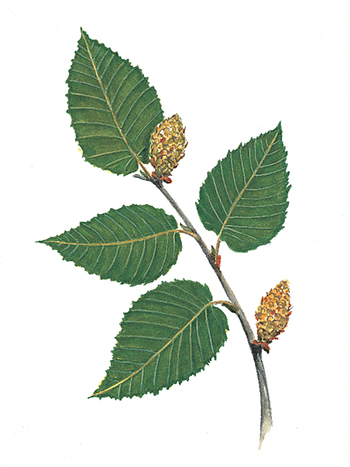Quebec's provincial symbols
Located in east-central Canada, Quebec is the only Canadian province that has a predominantly French-speaking population, and the only one to have French as its sole provincial language.
Origin of the name
The name “Quebec” comes from the Algonquin word for “narrow passage” or “strait”. It was first used to describe the narrowing of the St. Lawrence River near what is now the City of Québec. Quebec has had several names throughout its history: Canada, New France, Lower Canada and Canada East.
Population (2006): 7,651,500
Area: Land – 1,356,790 km²Fresh water – 183,890 km²Total – 1,650,680 km²Capital: City of QuébecDate of entry into Confederation: July 1, 1867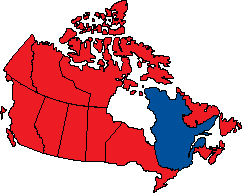
History
The Aboriginal peoples who inhabited present-day Quebec before Europeans arrived were mostly members of the Algonquian and Iroquoian linguistic groups; both greatly influenced the early history of the province. The Inuit inhabited northern Quebec, as they continue to do today.
Quebec was one of the first areas of Canada to be explored and settled by Europeans. Jacques Cartier landed in the Gaspé Peninsula in 1534 and claimed the land that would be known as Canada for the King of France. In 1608, Samuel de Champlain founded the City of Québec. A few years later, Paul de Chomedey de Maisonneuve founded Ville-Marie (1642), which would become Montréal in the late 18th century.
The Battle of the Plains of Abraham in 1759 marked the defeat of the French troops at the hands of the British army. With the Treaty of Paris in 1763, the French King signed over New France to the British Crown. This led to a large wave of immigration of English, Irish and Scottish settlers.
The Quebec Act of 1774 allowed the free practice of the Catholic faith, the use of the French language and the establishment of French civil law in Quebec. The Constitutional Act, 1791, created two provinces: Upper Canada (Ontario), which was mostly Anglophone, and Lower Canada (Quebec), with a Francophone majority. The Constitution Act, 1867, united Canada's provinces of Ontario, Quebec, Nova Scotia and New Brunswick into a federation.
The province of Quebec was redefined in 1898 when its northern boundaries were recognized following a judicial decision rendered in 1884. Quebec's territory was then extended in 1912 to include the District of Ungava, formerly part of the Northwest Territories. In 1927, the Judicial Committee of the British Privy Council was asked to decide a boundary dispute between Canada and Newfoundland over the exact border between Labrador and Quebec.
Quebec is the largest province in Canada. It is three times the size of France and seven times larger than Great Britain. A bounty of lakes and rivers dot the landscape; one of the longest navigable waterways in the world, the St. Lawrence River, stretches over 1200 km of the province's territory. Quebec extends over several vegetation zones: the boreal forest to the south, the taiga in the central area and the tundra in the more northern regions.
Created in 1792, the Parliament of Quebec is one of the world's oldest parliaments. The province’s political system was inspired by the British model. Its legal system on the other hand rests on the co‑existence of French-origin private law (codified law) – originally based in part on the Napoleonic Code – and English-origin public law (common law).
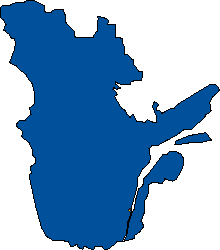
Coat of arms
The Quebec coat of arms was granted by Queen Victoria in 1868, and revised by Order of the Lieutenant Governor in Council in 1939.
The shield features three gold fleurs-de-lis on a blue field – a reminder of Royal France, which once ruled Quebec; the original coat of arms, granted by Queen Victoria, had two blue fleurs-de-lis on a gold background. A sprig of three green maple leaves, representative of Canada's numerous maple trees, is displayed in the lower portion. The gold lion in the shield’s centre represents the British Crown that granted the shield.
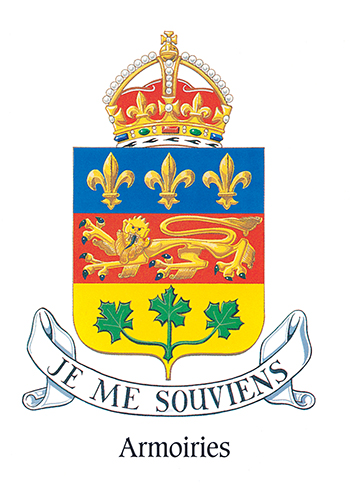
Motto
Je me souviens (I remember)
Flag
The Quebec flag was adopted by Order of the Lieutenant Governor in Council in 1948 and confirmed by the province's legislature in 1950. The flag's proportions are three by length and two by width.
The flag of Quebec is often called the “Fleurdelisé”. The white cross on a blue field recalls an ancient French military banner, and the four fleurs-de-lis are symbolic of France.
Legend has it that the use of the fleur-de-lis as an emblem of French royalty dates back to the year 496 when Clovis, the first Christian king of France, was baptized by Saint Remigius and is said to have adopted the flower as his personal emblem.
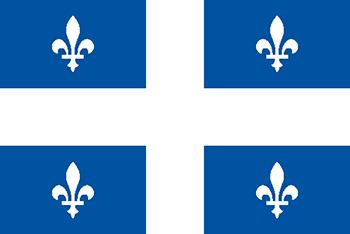
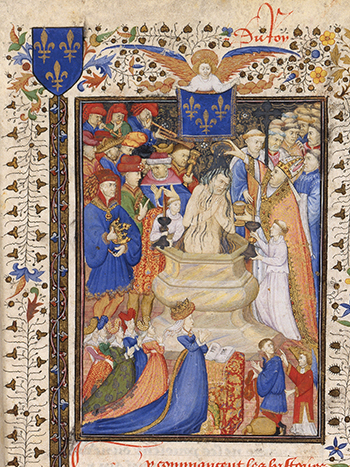
Floral emblem
The blue flag (Iris versicolor) is the floral emblem of Quebec, as per An Act respecting the flag and emblems of Québec, which came into force on November 5, 1999.
An indigenous spring flower, the blue flag grows on over half of Quebec's territory, from the St. Lawrence Valley to the shores of James Bay. From 1963 to 1999, the white garden lily was the floral emblem of Quebec.
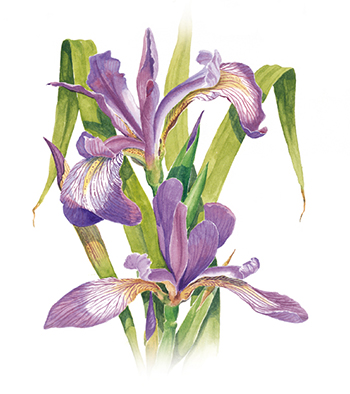
Other provincial symbols
Bird
The snowy owl (Nyctea scandiaca) was adopted as Quebec’s official bird in 1987. Unlike other owls, the snowy owl is not exclusively nocturnal. It hunts both day and night, surviving mainly on lemmings. Quebec decided to select the snowy owl as a symbol of the province’s support for wildlife protection.
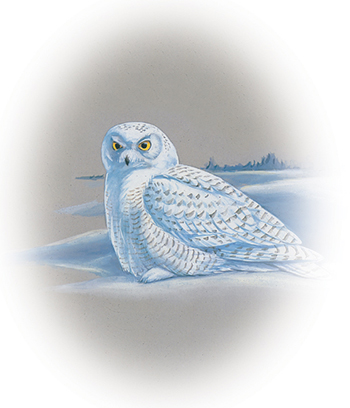
Tartan
The plaid of Quebec tartan owes its inspiration to the provincial coat of arms, which in turn reflects the history of the province. The colours of the tartan are taken from the three horizontal divisions of the shield: the blue is for the field of the upper division containing three fleurs-de-lys; the green is for the sprig of maple leaves on the lower division; the red is for the background of the centre division; the gold is for the lion rampant in the third division and also for the crown of the crest; and the white is for the scroll with the motto “Je me souviens” (I remember).
Tree
The yellow birch (Betula alleghaniensis) has played a vital role in the furniture industry of Quebec since the early days of colonization. It is found in abundance throughout the southern regions of the province and is admired for its beauty and functionality.
